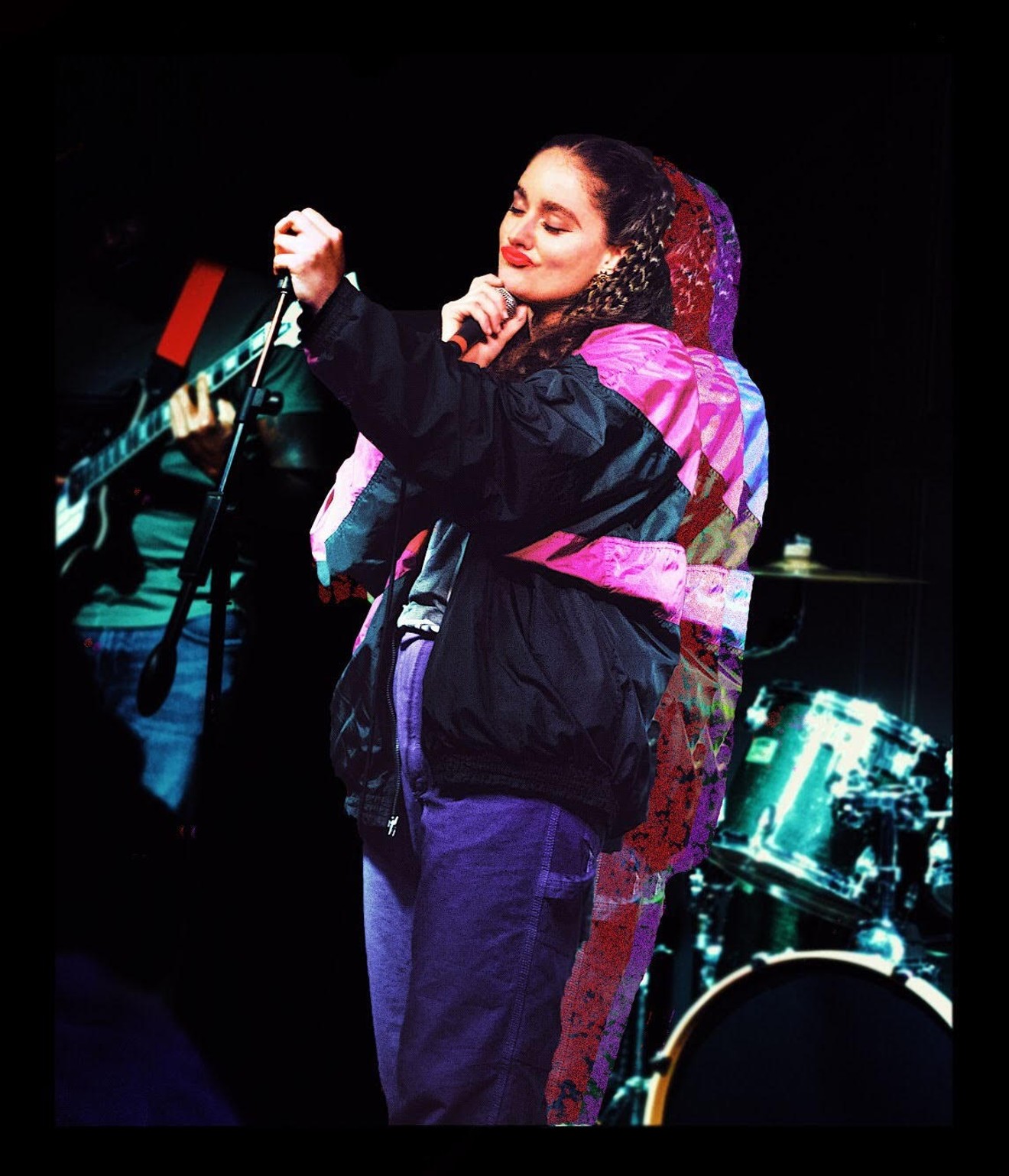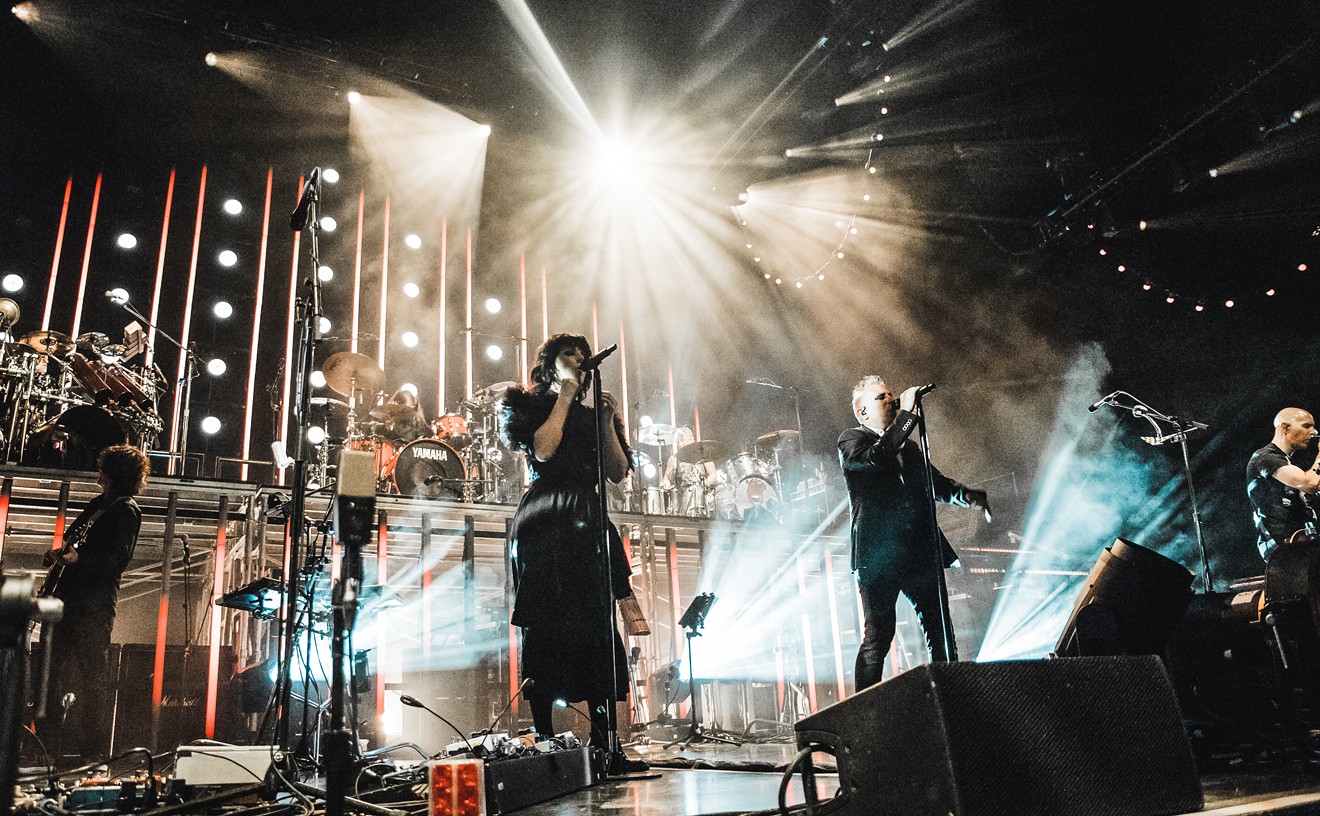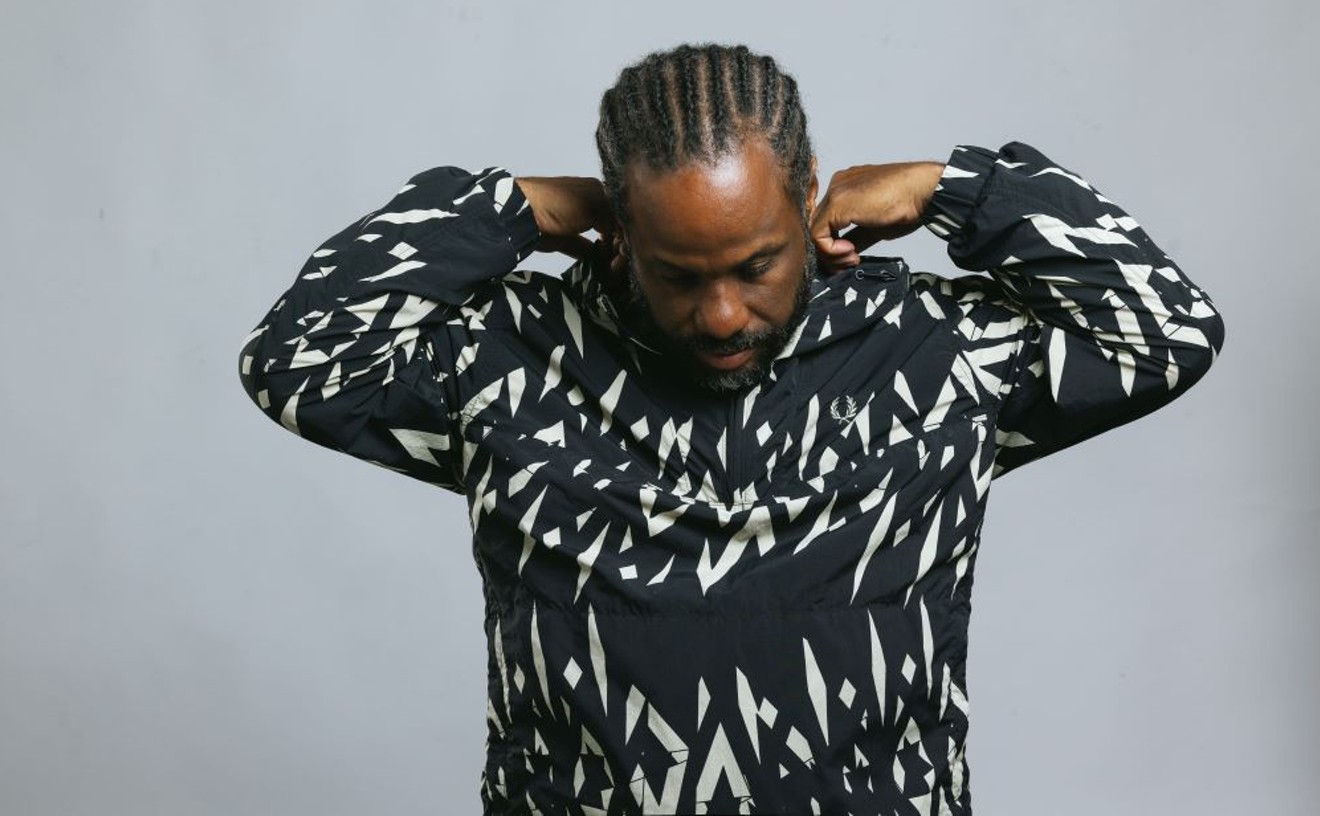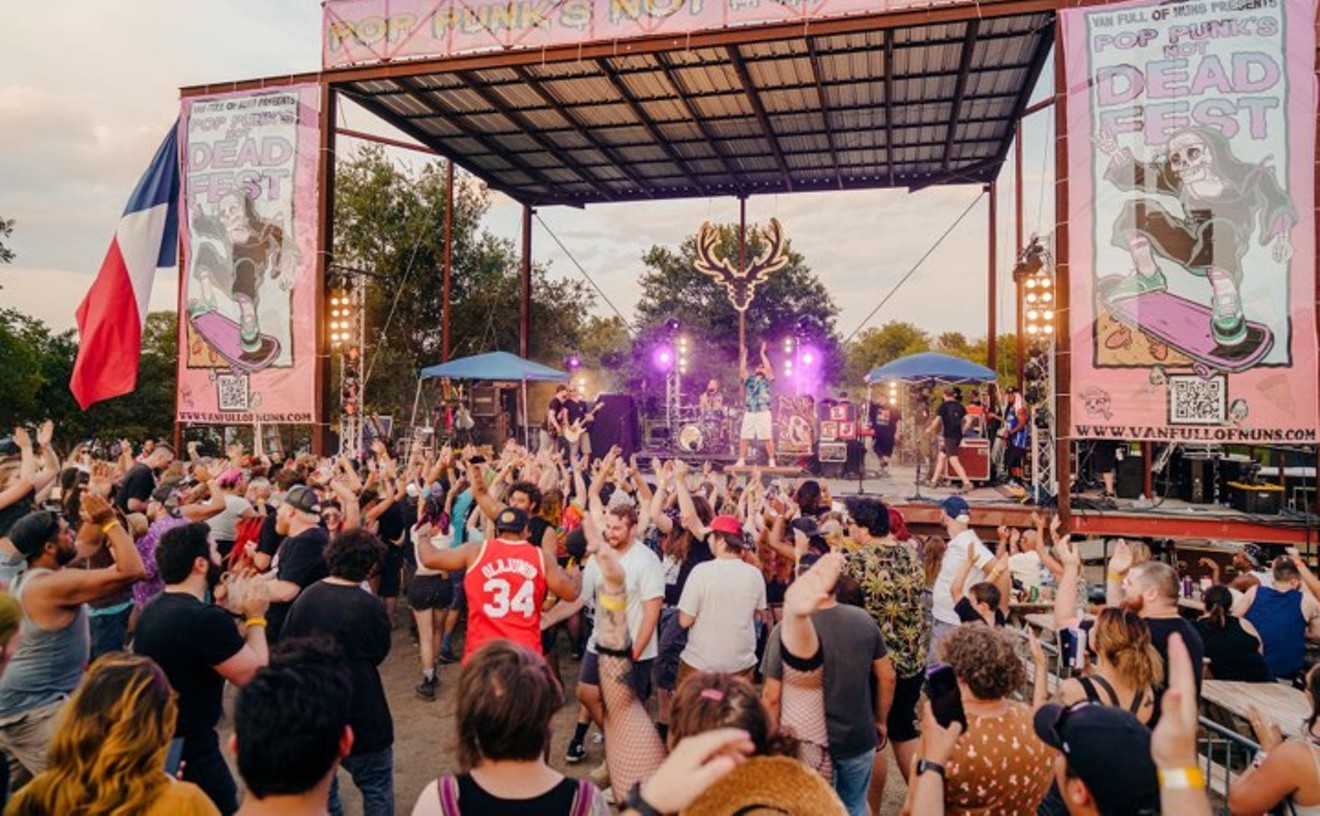Amanda Bongiovanni is hesitant to share the story behind her nickname-turned-stage name. “I feel a little weird about it,” she says. “Like, it’s not professional enough.”
Bongiovanni is a hip-hop soul singer born, raised and based in Dallas. She has taken shelter from a midsummer storm in Astoria Cafe, where lightning etches the night sky outside its windows, the accompanying thunder punctuating each of her sentences like dramatic ellipses. Against this backdrop, she explains the meaning behind her nickname: Ravs.
“It’s short for ravioli,” she says brusquely, clearly wanting to get this over with as soon as possible. It was a college thing. Her classmates at the University of Missouri found their Dallas friend’s Italian heritage alluring, so they called her Ravioli, or “Ravs” for short.
“I went all-in on it,” the rapper explains. “I even had tiny raviolis on the back of my business cards.” But now that she has a career to worry about, Ravs is unsure about the nickname. Ravs is unsure about a lot of things. She has always struggled with self-esteem and finding the time it takes to attain success in music. Nevertheless, she is proud of the direction she is heading, and hopes to cultivate a community where she and other women in music are not so unsure.
“I love this community, but I want women to have more spaces, to have more women to go to,” she says. “I’m lucky to be where I’m at. Sometimes I still think, ‘How did I get here?’”
Ravs did not endure any of the trials often associated with a young artist’s turbulent upbringing. By any estimation, her life thus far has been a charmed one. She has a supportive sister, good friends and supportive parents.
“They had to see it to believe it,” Ravs says of her family. “But once they saw me perform, and saw that I could do this, they were on board.”
Ravs’ mother, Nancy, remembers her daughter showing early signs of becoming the bold, brash artist she is today.
“That girl always dressed herself,” Nancy reminisces with a laugh. “She knew exactly what she wanted, and she had her own style, her own way of presenting herself that couldn’t be touched.”
One element of said style is Ravs’ penchant for contrast: bright, vibrant colors on top of black. The same can be said for her music, which contrasts her love for Nas with her love for Ingrid Michaelson. Ravs picked up a guitar when she was 15, and started strumming to early faves like The Beatles and Led Zeppelin. Michaelson and Norah Jones followed. Then came Grandmaster Flash and Rakim. She was entranced by the beats and the lyrical activism, though she holds no illusions about being involved in any hip-hop movement.
“No one thinks, ‘Oh, I’m going to make this for the girl from the suburbs of Dallas.’ It’s poetry, it’s justice redefined, but it wasn’t made for me.”
The budding hip-hop head fell deeper in love with the genre when she enrolled at Missouri. She started writing her own songs, fusing her love of soul, pop and rap into a sonic meld: rap verses, pop, singer-songwriter choruses and beats complemented by her guitar strumming. This sound found few audiences.
“Open mics are not that heavy out in Columbia,” she says. “I met my people, though.”
She connected with a DJ and drummer, and joined ranks with Interlude Music, a student-run label. She also befriended the fellow out-of-staters who dubbed her “Ravs.” One of those friends, Paige Plier, remembers Ravs’ knack for penning songs.
“She added her twist to other people’s songs, she wrote her own stuff, and she wrote me songs to cheer me up,” Plier says. “She was always creating.”
“I love this community, but I want women to have more spaces, to have more women to go to.” — Ravs
tweet this
As her sound developed, her campus was engulfed by controversy. Grad students lost health insurance. Several racism-fueled events went unaddressed by administrators. Student Jonathan Butler announced a hunger strike that would not end until the president of the university resigned.
“It felt like we were on fire, and the whole world knew it,” Ravs recalls. “I had family members from Germany calling me to ask what was going to happen.”
Amidst the fire, Ravs found a fellow hip-hop head: Professor Stephanie Shonekan, then chair of the Black Studies Department. After two years of racial turmoil, Shonekan designed a class called “Race and the American Story.”
“We want to engage students in the evolution of the ways in which we talk about race,” Shonekan told Columbia’s Missourian newspaper at the time. “We would like for students to look at what we’re hearing in 2017 with Charlottesville or Mike Brown or Black Lives Matter and contextualize it in the very deep history of the ways in which race has been talked about.”
That included discussions about music, for which Shonekan invited Ravs, then a new graduate still living in Columbia. Ravs joined talks on music, its place in social movements and its long-lasting impact.
“You hear a song like ‘What’s Going On’ by Marvin Gaye, and you can hear how every word is still relevant today. That’s what music can do.”
When the semester ended, Ravs returned home. She worked several jobs: a marketing agency (“to pay the bills”), The Bomb Factory (“I wanted to be close to music”) and Steve Madden (“I like shoes”). The allure of full-time music was ever present, so she slowly transitioned from three jobs to one to focus her efforts on gigs and an EP.
The culture and community she craved in Columbia was in her backyard the whole time, yet her love for Dallas is not unconditional. She laments that women like her are so often the creator but seldom the producer, that women like her lack spaces to create and collaborate and that women like her feel unsure about their nicknames.
“No matter what, at some point you have to go to a man,” she says about the production process.
That is why she has started a conversation with over 50 other female artists. Via group chat, they talk about music and their careers, share advice, stories, jokes and ideas. One of Ravs’ ideas? An all-female EP, with songs written, performed and produced by women.
“One of the hardest parts of being an artist is you have to go out, throw yourself into the world and somehow be OK,” she says. “I want us to be OK.”
As she sips her rum-infused espresso, Ravs talks about these goals, about being more intentional. She is making lists now, writing everything she wants to accomplish, then executing it. An EP was on the list, and she released it in April. The all-female EP is now on her list, too.
“It’s like that line in ‘Run,’” she says, referring to one of the Michaelson-meets-hip-hop songs on her debut EP. “‘Don’t get caught up in what they want you to do,’” she sings softly. “'Run, baby, run.'”
Her voice gets a little louder with each lyric; she becomes less afraid of annoying the people nearby. Or maybe she just doesn't care what they think. “‘Don’t you be afraid, you courageous one. Run, baby. Run.’”











